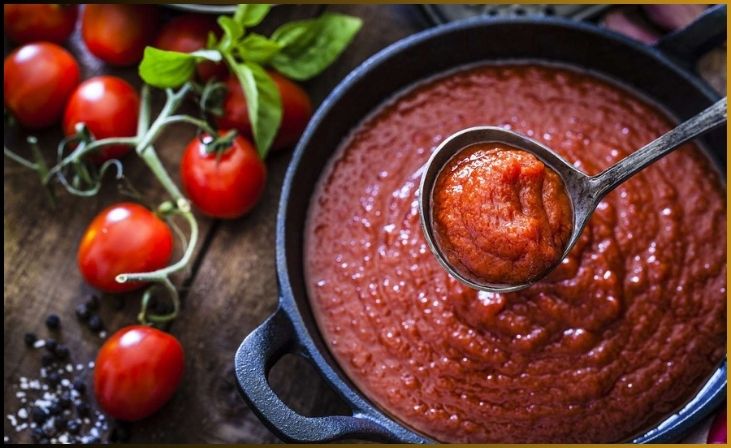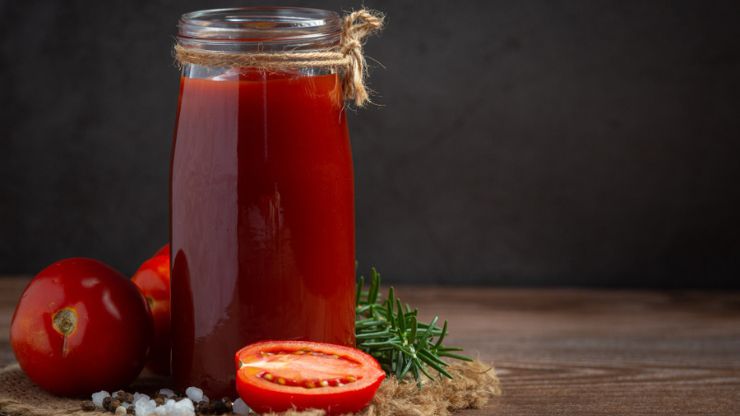Embark on a culinary adventure as we explore the art of making fermented ketchup. This isn’t your average condiment—it’s a probiotic-rich, flavor-packed elixir that transcends the ordinary. In this guide, we’ll delve into the nuances of selecting the finest tomatoes, mastering the fermentation process, and infusing your ketchup with a symphony of herbs and spices.
Join us on a journey to create a homemade fermented ketchup that not only tantalizes your taste buds but also introduces a burst of health benefits to your favorite dishes. Get ready to unlock the secrets of this fermented delight and revolutionize your condiment experience.
Table of Contents
ToggleChoosing Quality Tomatoes
The journey begins with selecting the right tomatoes. Dive into the nuances of tomato varieties, focusing on freshness and flavor profiles. Whether opting for heirlooms or cherry tomatoes, quality is key to achieving a ketchup that bursts with the essence of ripe, sun-kissed tomatoes.
Step 1: Preparing the Tomato Base

To embark on the journey of crafting delicious fermented ketchup, the first step involves selecting and preparing the tomato base. Begin by choosing ripe, high-quality tomatoes bursting with flavor. Wash them thoroughly, remove the cores, and chop them into small pieces. The key is to use fresh, seasonal tomatoes for the best taste. This vibrant tomato base forms the foundation of your fermented ketchup, ensuring a rich and savory profile that will elevate your culinary creations.
For More- A Comprehensive Guide To Make Your Own Fermented Vegetables
Step 2: Crafting the Fermentation Brine
The next crucial step in making fermented ketchup is crafting the fermentation brine. In a large bowl, dissolve sea salt in water to create a brine solution. The salt concentration is typically around 2 tablespoons per quart of water, ensuring the right balance for fermentation. This brine serves as the catalyst for the fermentation process, encouraging the growth of beneficial bacteria while preserving the ketchup.
Precision in salt measurement is key, as it not only influences the fermentation but also contributes to the distinctive flavor profile of the final product. The crafting of this brine sets the stage for the transformative fermentation journey.
Step 3: Flavor Infusion
Step 3 in the process of making fermented ketchup involves the exciting stage of flavor infusion. Here is where you can unleash your creativity and tailor the taste to your liking. Add a variety of herbs, spices, and aromatics to the tomato base and brine mixture. Common choices include garlic, onions, black pepper, cloves, and bay leaves.
Experiment with different combinations to achieve a unique and personalized flavor profile. This step not only enhances the taste but also introduces a depth of complexity to your fermented ketchup. The infusion of flavors during fermentation adds a delightful twist to the traditional condiment.
Don't just scroll, subscribe!
BuzzTrail's unique web-stories are the cure for boredom you've been waiting for.
Step 4: Fermentation
Now that your ketchup base is infused with flavorful elements, it’s time to usher in the transformative process of fermentation. Carefully transfer the seasoned tomato mixture into clean, airtight fermentation jars, ensuring that there’s some space at the top. Seal the jars to create the perfect environment for the beneficial bacteria to work their magic.
Allow the fermentation jars to rest in a cool, dark place, typically for around 5 to 7 days. Throughout this period, the tomatoes will undergo a natural fermentation process, developing complex flavors and transforming into a tangy, probiotic-rich ketchup. This step is crucial for achieving that distinctive fermented taste.
Step 5: Straining and Adjusting Consistency

After the fermentation period, it’s time to move on to Step 5: Straining and Adjusting Consistency. Begin by carefully opening the fermentation jars and straining the fermented mixture to remove any solids. Use a fine-mesh strainer or cheesecloth to separate the liquid from the remaining ingredients. This step ensures a smooth and refined texture for your fermented ketchup.
As you strain the mixture, take note of the consistency. Depending on your preference, you may want a thicker or thinner ketchup. Adjust the consistency by adding small amounts of water until you achieve the desired thickness. This step allows you to tailor your ketchup to your taste and preferred texture.
Step 6: Refrigeration and Culinary Exploration
Once you’ve achieved the perfect consistency, it’s time to move on to Step 6: Refrigeration and Culinary Exploration. Transfer the strained and adjusted fermented ketchup into clean, airtight containers suitable for refrigeration. Placing the ketchup in the refrigerator serves two essential purposes: it slows down the fermentation process, preserving the ketchup, and it enhances the flavor profile over time.
Now comes the exciting part – culinary exploration! Your homemade fermented ketchup is ready to elevate a variety of dishes. Whether you use it as a condiment for burgers, a dipping sauce for fries, or a flavorful addition to marinades, this probiotic-rich ketchup adds a unique twist to your favorite recipes. Get creative in the kitchen and enjoy the fruits of your fermentation journey!
Also Read- How to Make Fermented Coleslaw
Conclusion
In conclusion, crafting your own fermented ketchup is not only a rewarding endeavor but also a flavorful one. As you’ve witnessed throughout this guide, the fermentation process not only imparts a tangy depth to the ketchup but also introduces probiotics, enhancing its nutritional value. By embracing the art of fermentation, you take a step towards a healthier, homemade condiment free from artificial additives.
As you savor the unique taste of your homemade fermented ketchup, you also contribute to a broader movement of reclaiming control over what goes into our food. So, seize the opportunity to experiment with flavors, enjoy the benefits of fermentation, and relish every dollop of your personalized, probiotic-rich ketchup creation. Happy fermenting!
FAQs
How long does the fermentation process take?
How long does the fermentation process take?
The fermentation time varies but generally ranges from a few days to a week. Regular taste testing allows you to gauge the ketchup’s flavor development.
Can I adjust the sweetness and acidity of my fermented ketchup?
Can I adjust the sweetness and acidity of my fermented ketchup?
Absolutely! Experiment with honey, maple syrup, or vinegar to tailor the sweetness and acidity to your liking during the blending stage.
What are the best tomatoes for fermented ketchup?
What are the best tomatoes for fermented ketchup?
Choose tomatoes known for robust flavor, such as Roma, San Marzano, or heirloom varieties. Freshness is key, so opt for in-season tomatoes for optimal results.

